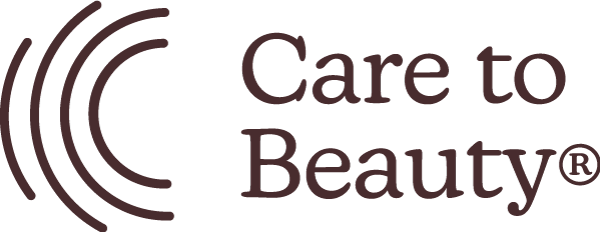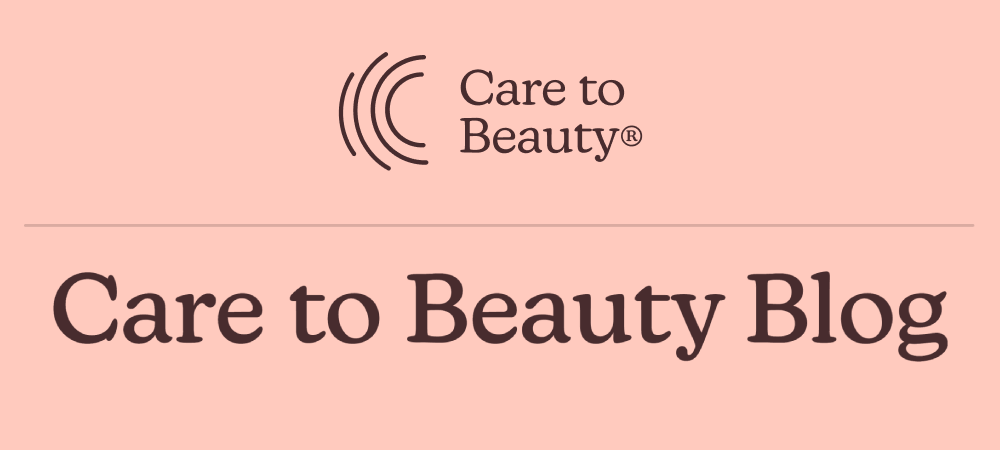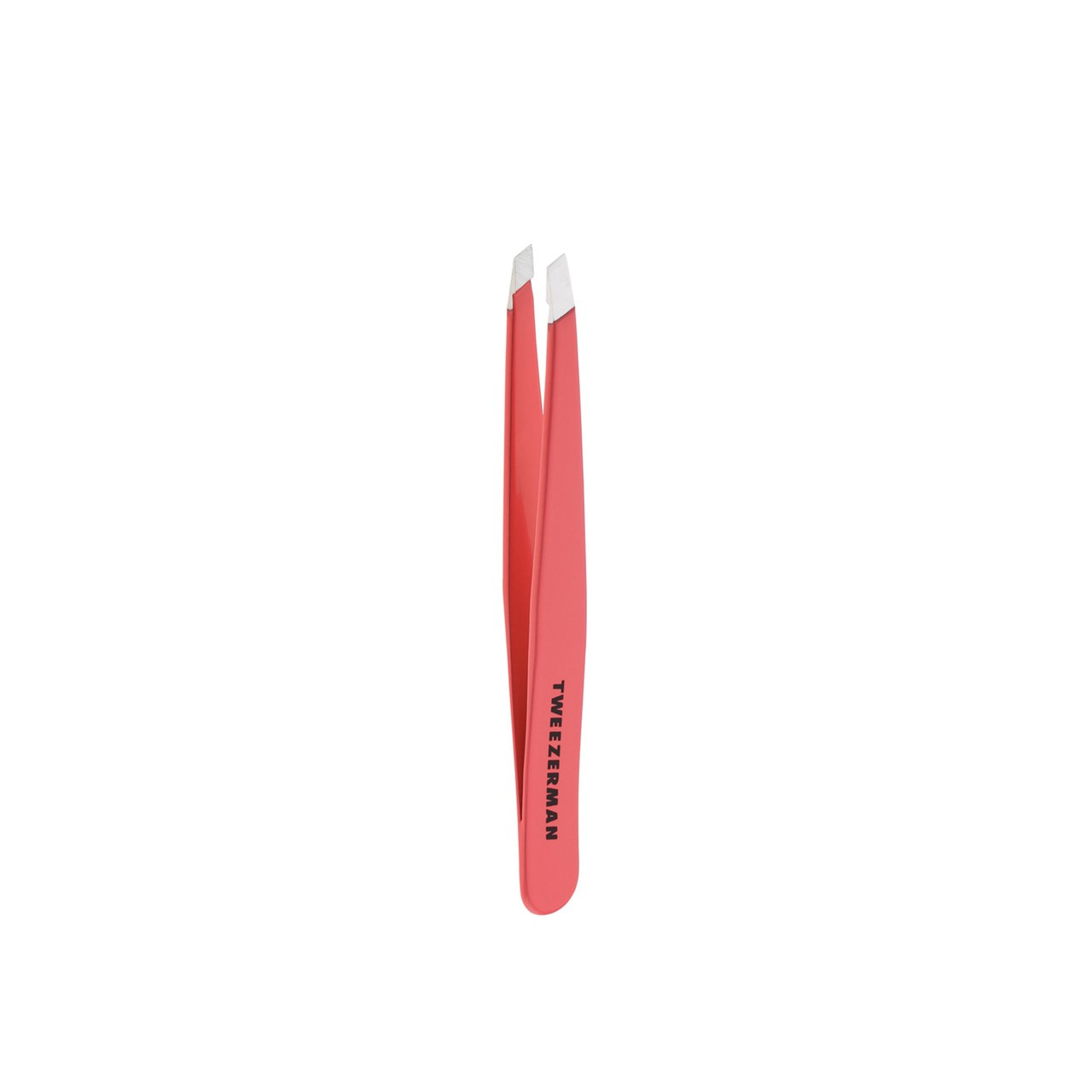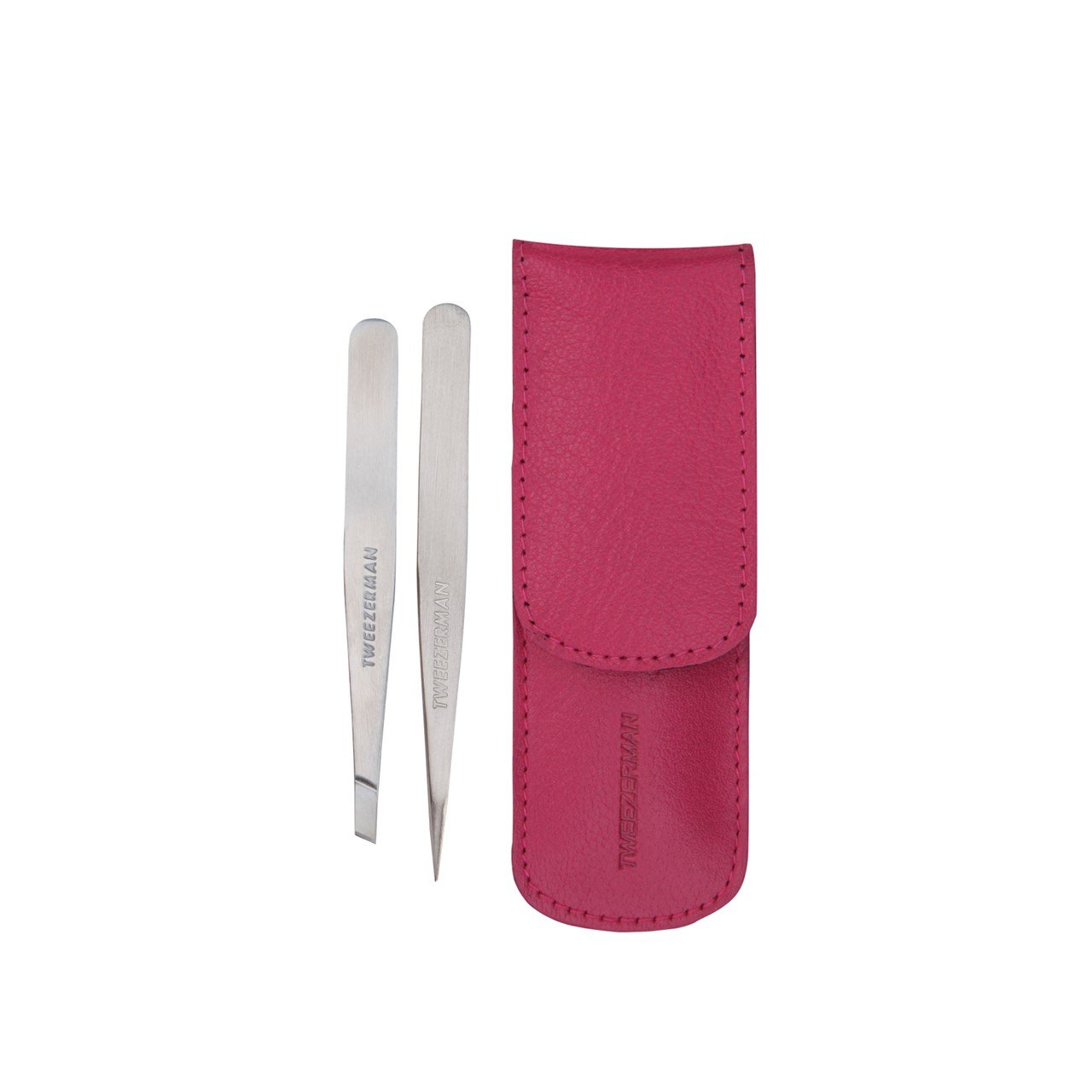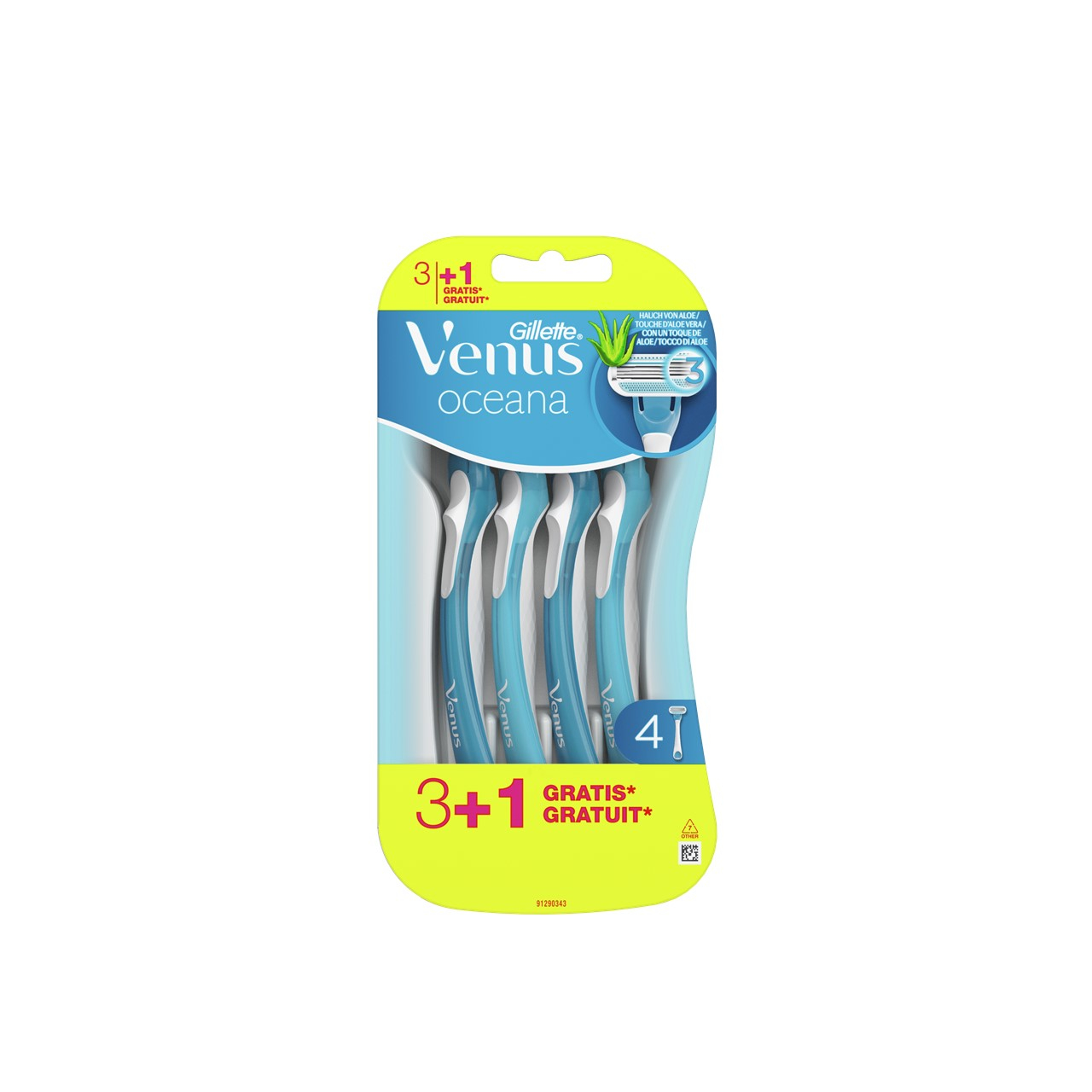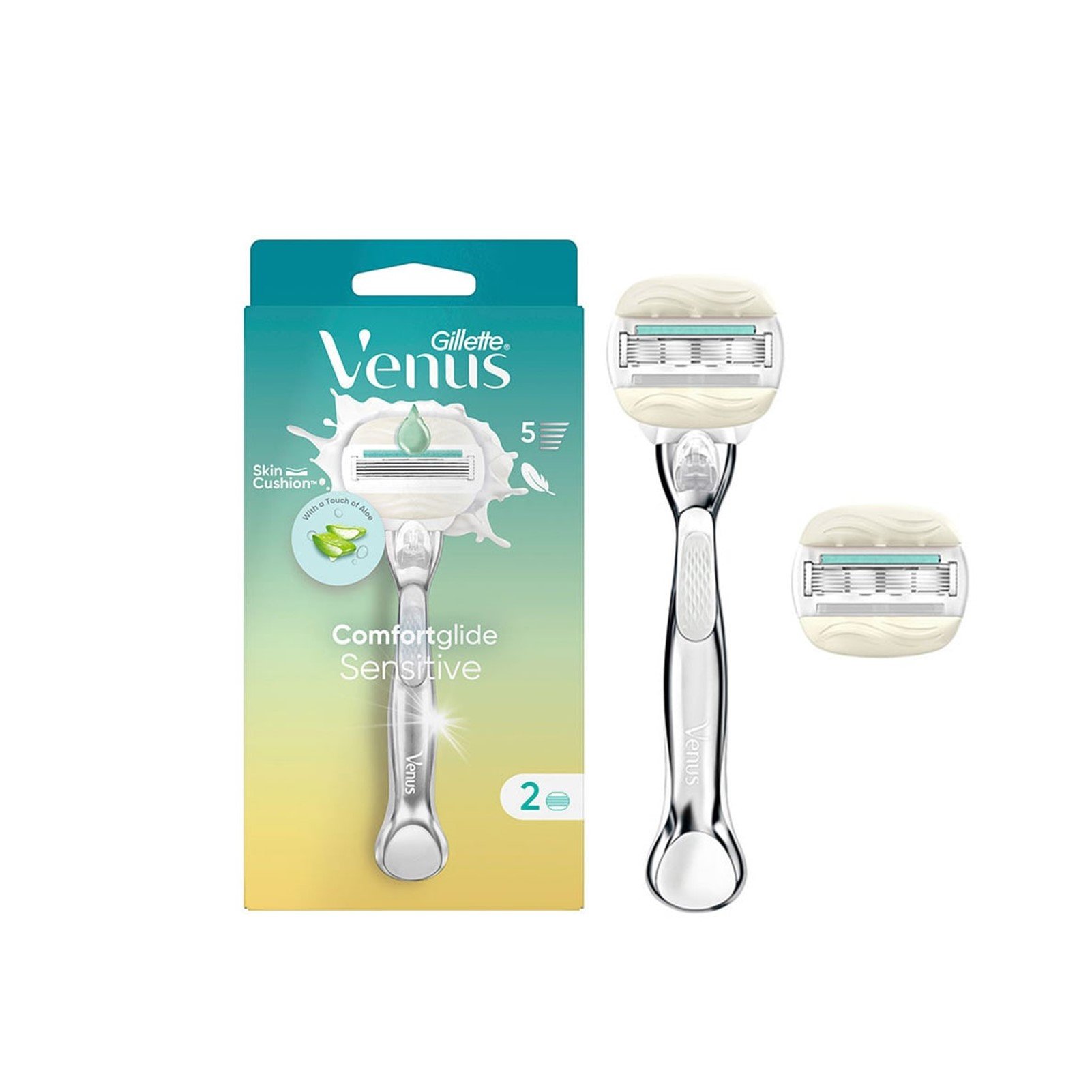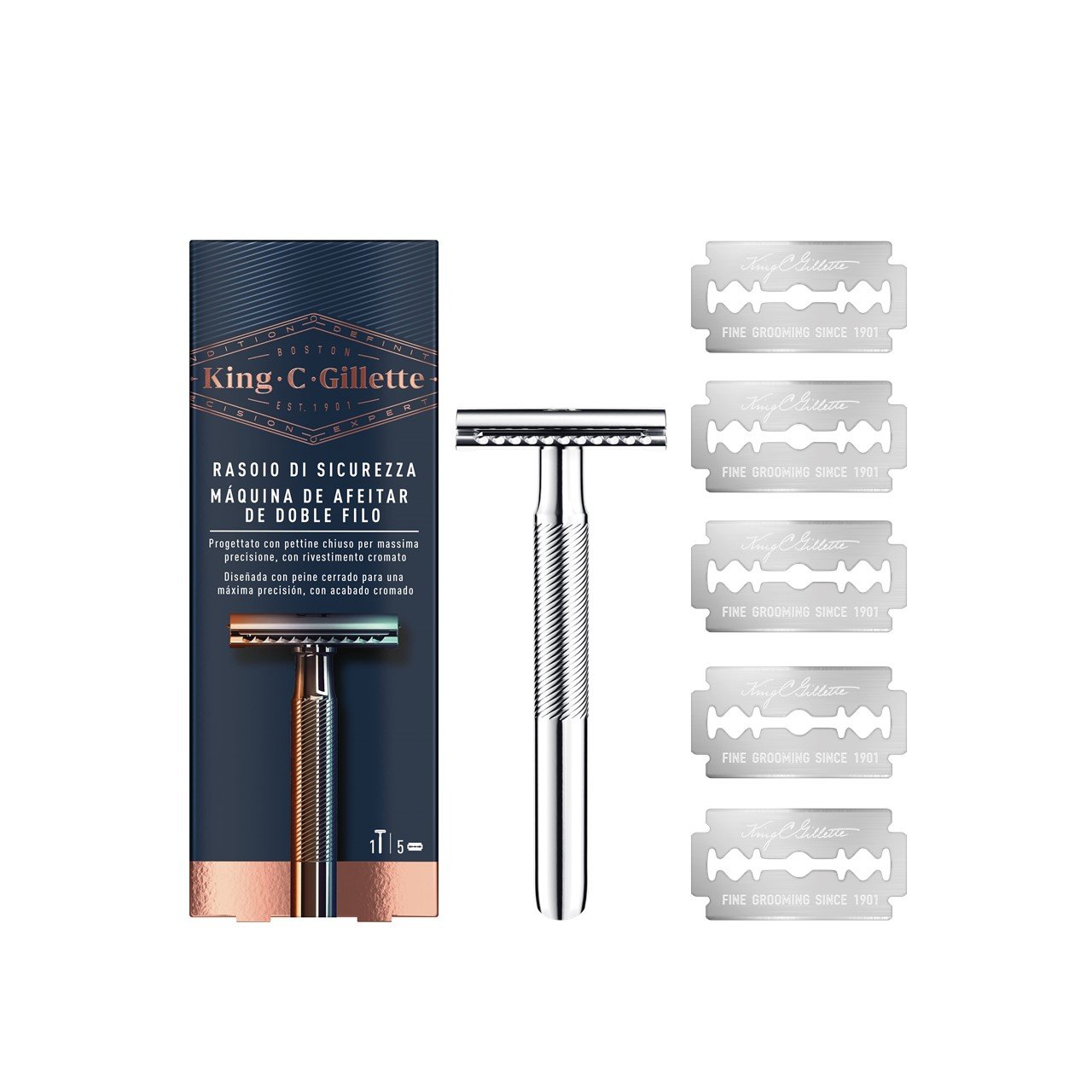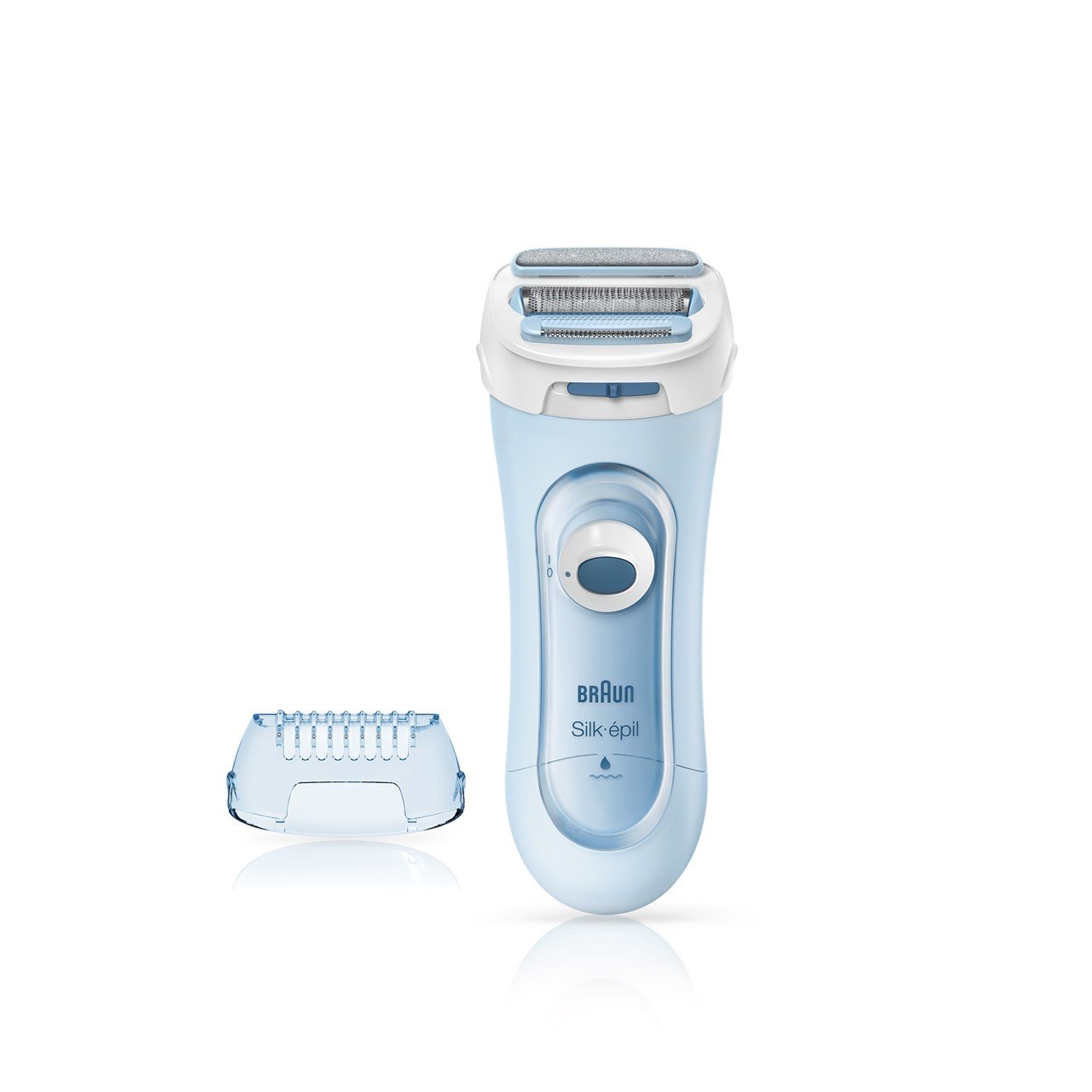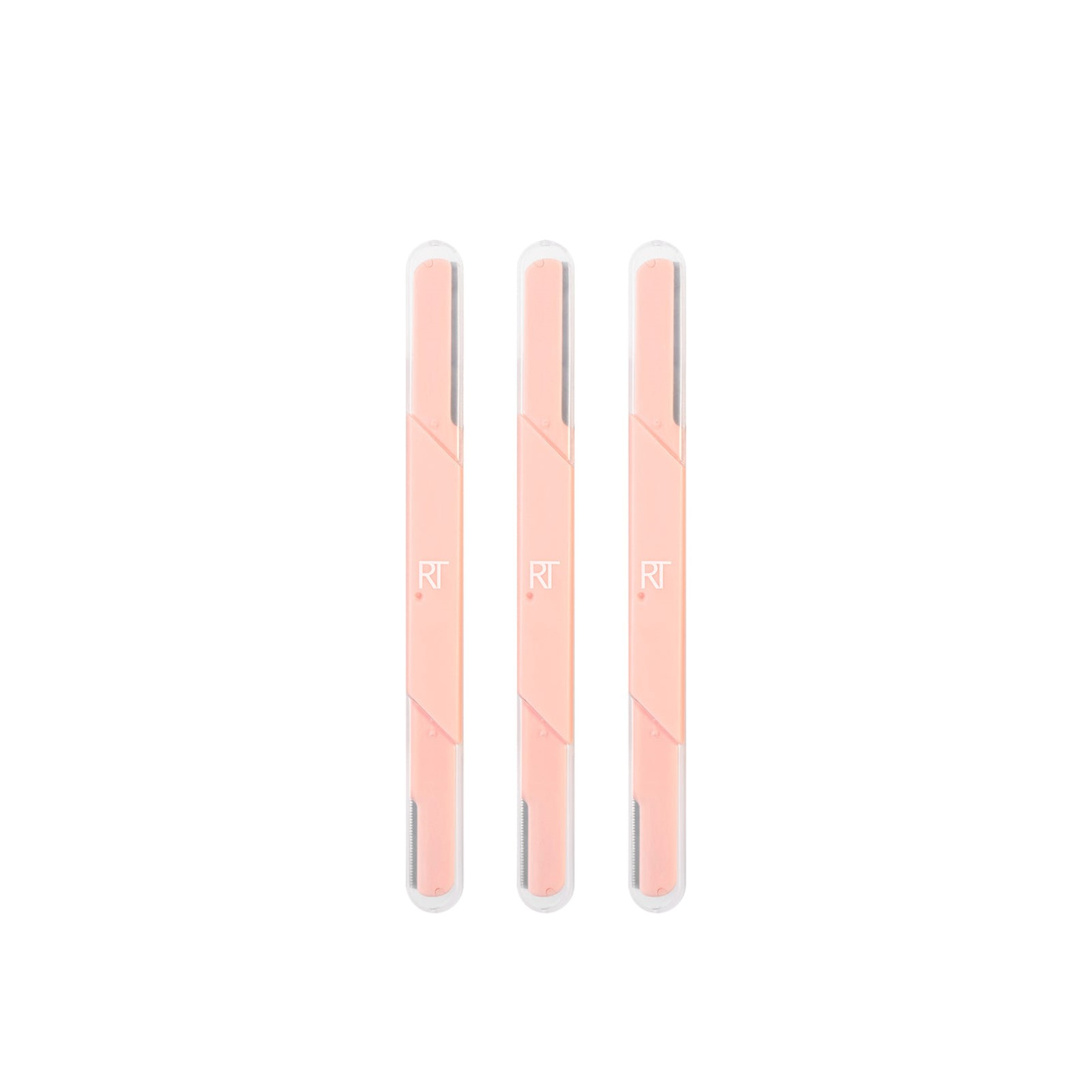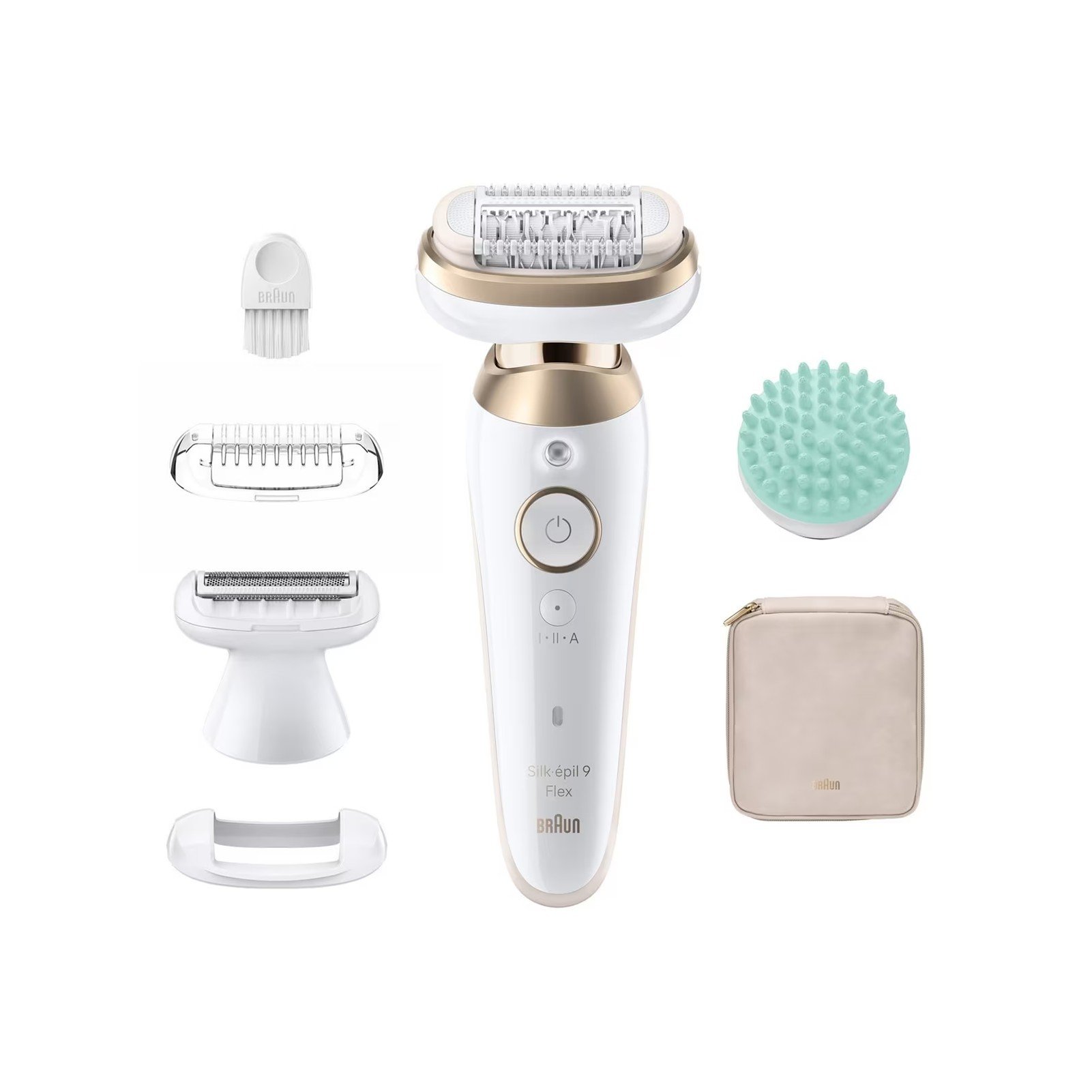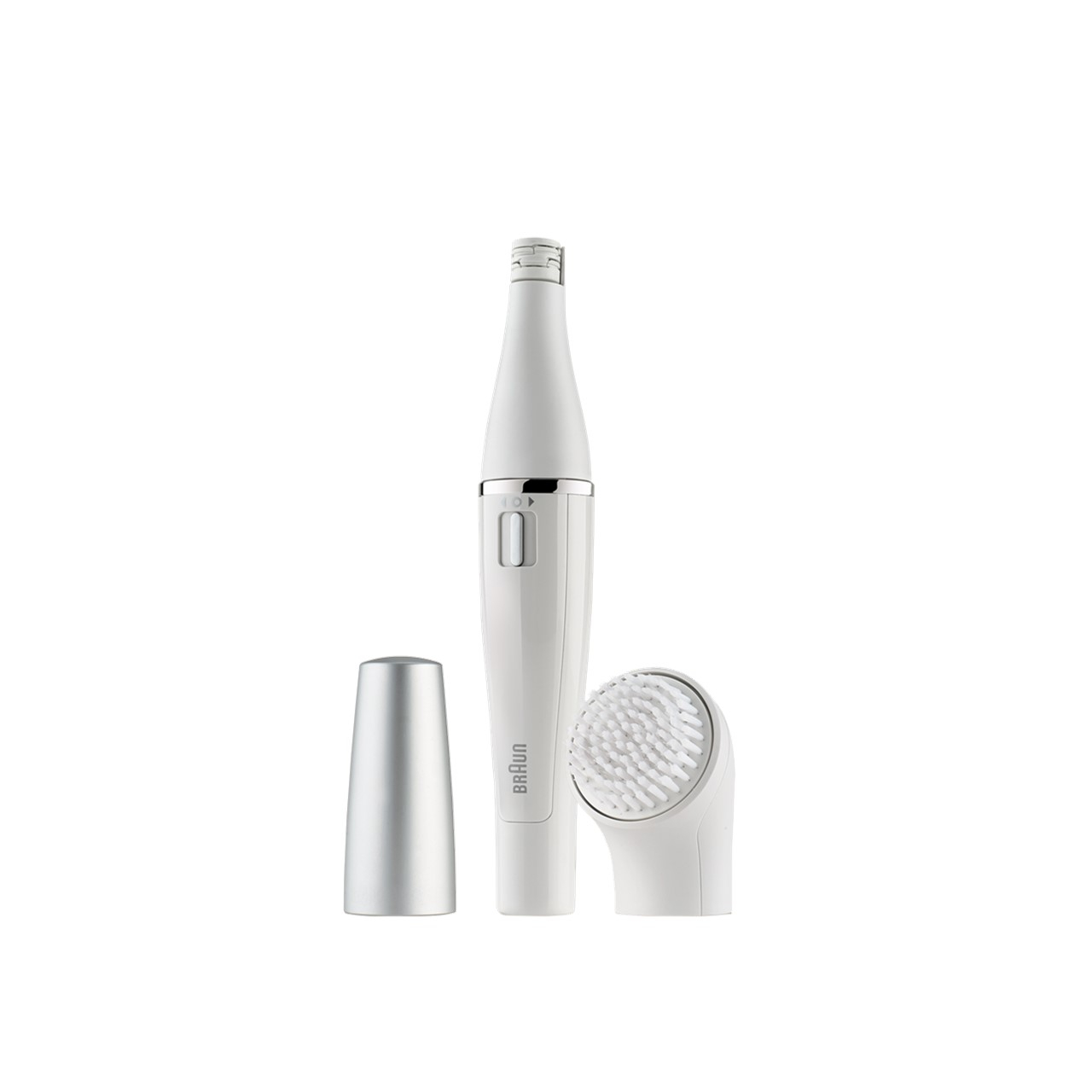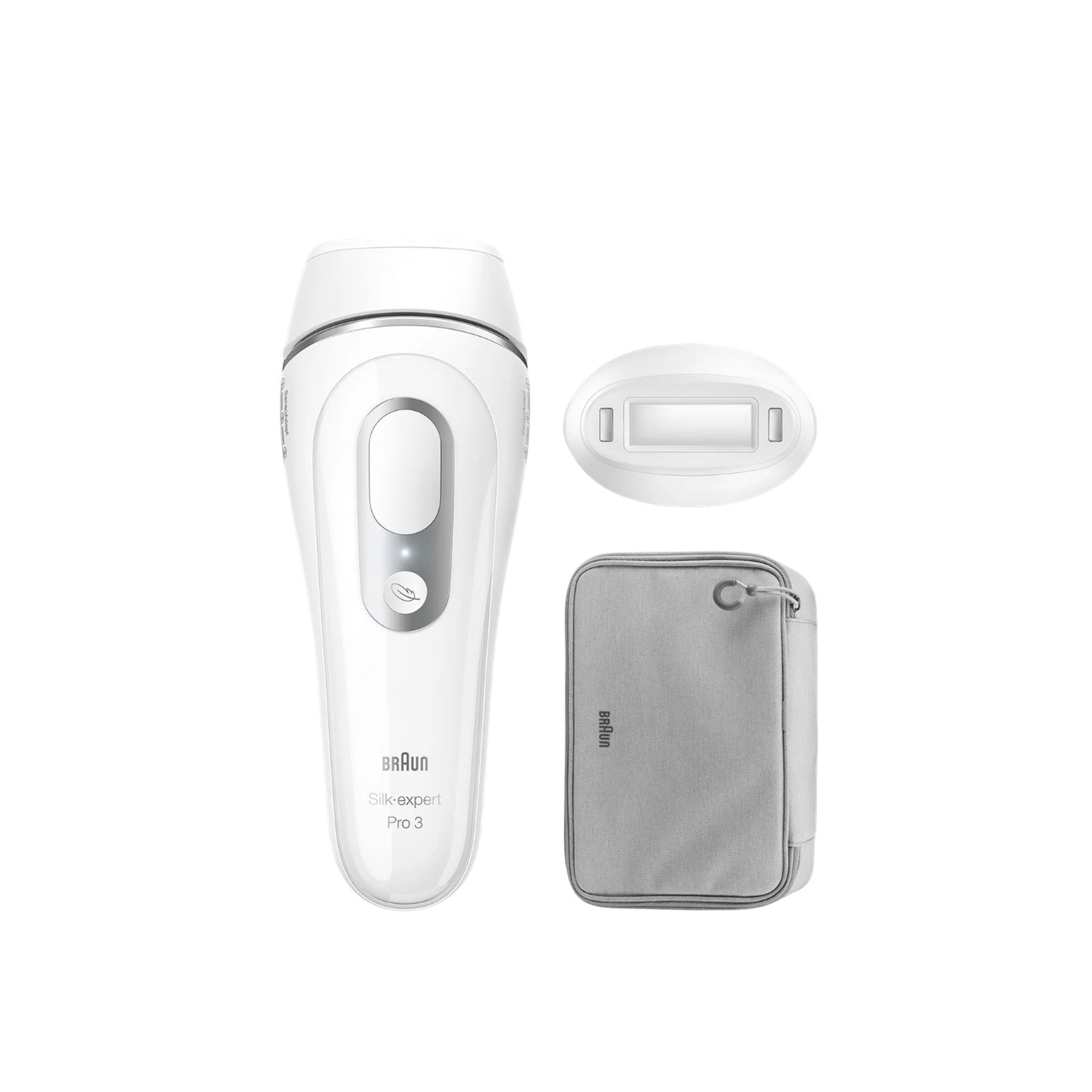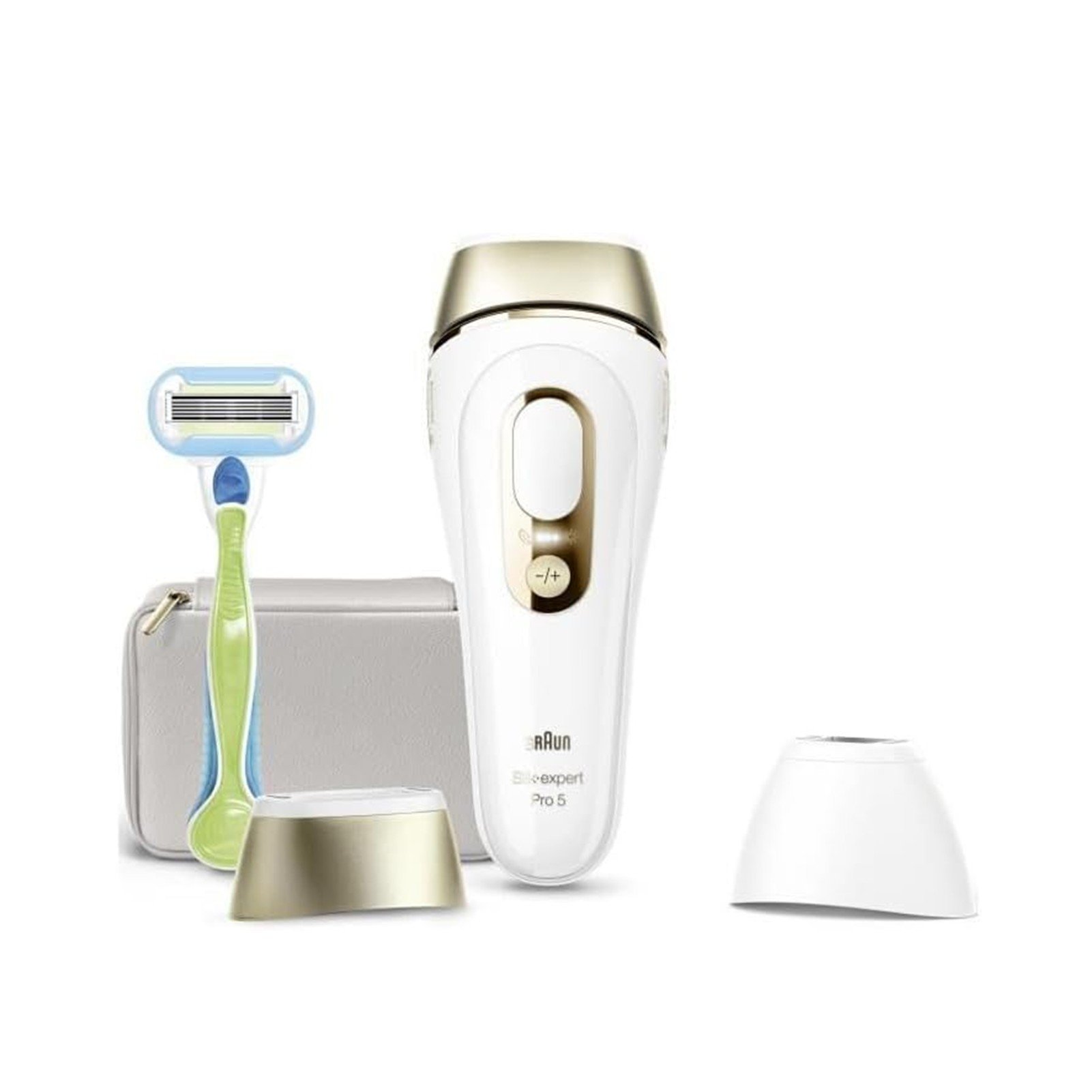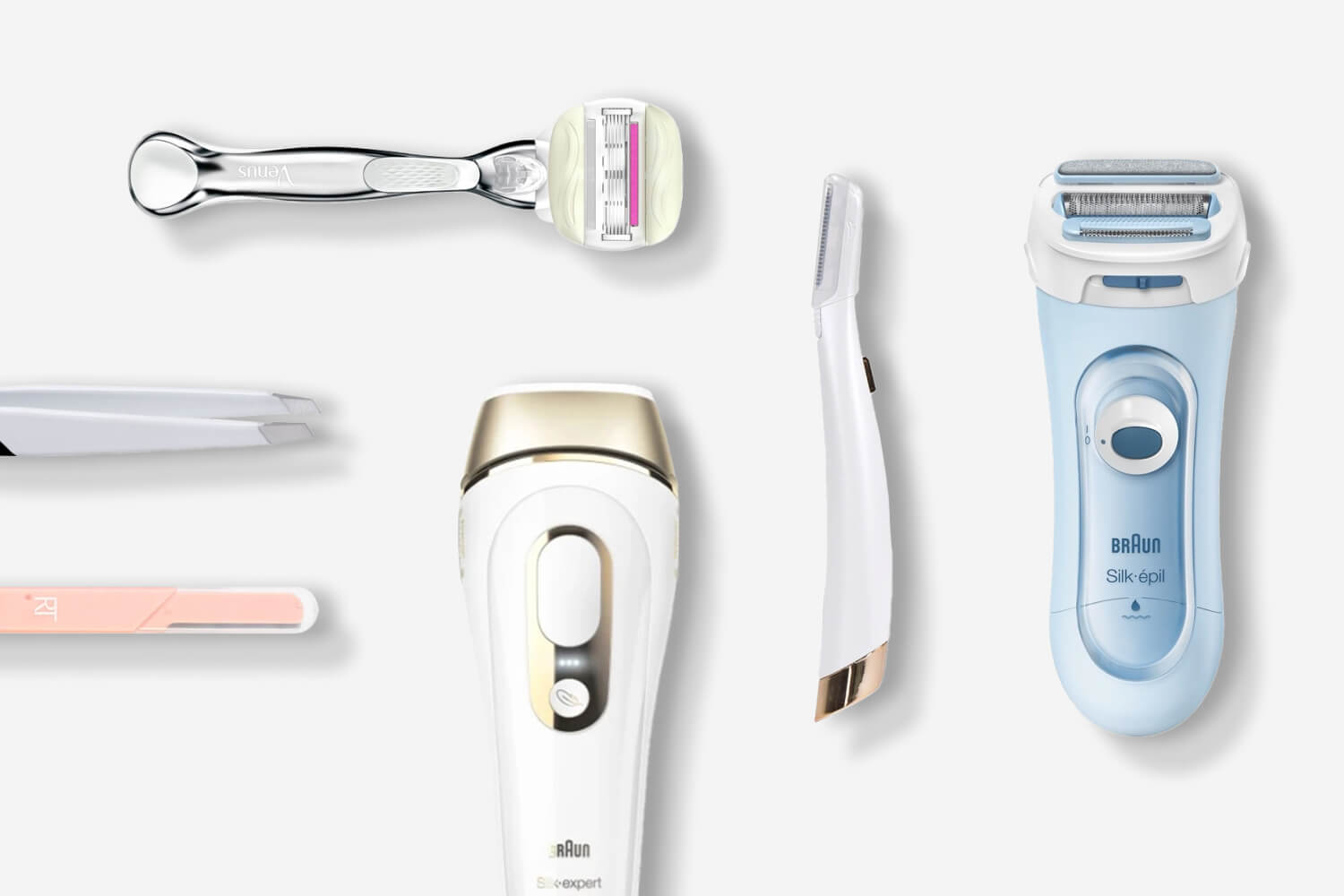
It seems like, with each passing day, there are more and more hair removal methods at our disposal. And the best-but-also-worst part? We can access them from the comfort of our own home! We’re talking about traditional methods like shaving and waxing, but also newfangled methods like dermaplaning, epilation, and even IPL. With so many options, it’s natural to feel confused as to which hair removal method best suits your needs. Today, we’re going to dive deep into the world of hair removal to introduce you to the pros, cons, and so-sos of each at-home form of hair removal. Let’s get to it!
On this post:
Waxing
If you’re familiar with hair removal, you’re familiar with waxing. Very briefly, waxing consists of applying warm wax to the skin, letting it cool so that it adheres to the hairs, and then pulling off the wax so that the hairs come attached.
There are different ways of waxing: you can apply a strip of wax to the skin and then remove it directly once it’s hardened into a consistent shape; you can apply wax and then remove the wax with a strip of cloth or paper; you can apply pre-coated wax strips and remove them after a few seconds. The main difference between these methods is in the preparation of the wax (which can be heated in a microwave or in a wax warmer) and in the way the wax is removed (which can be removed by itself or with the help of a strip that helps you achieve a better grip).
Regardless of which way of waxing you choose, waxing has some pros and cons that are consistent across methods:
| Face or Body: | Both, depending on application |
|---|---|
| How long does it last: | 3-4 weeks |
| Pros: | Results last a long time Can be done at home with waxing kits or wax strips |
| Cons: | Can be painful and irritating to the skin Can be a messy process |
Tweezing
Tweezing is a pretty basic form of hair removal: you just pick up a pair of tweezers, grab onto individual hairs, and pull them out of the skin by the root. Because it removes the hair from the root, tweezing creates very long-lasting results. It’s also inexpensive and relatively easy to do, which are all important points in favor of this hair removal method.
As for the cons: tweezing can be painful and a little irritating to the skin, not to mention time-consuming. The good news is you won’t be doing it on large areas of the body. Indeed, tweezing is best applied to the eyebrow area (for that truly defined look!) or to any random stray hairs that catch your eye.
To sum it up:
| Face or Body: | Face |
|---|---|
| How long does it last: | 3-4 weeks |
| Pros: | Results last a long time Inexpensive Can be done at home, quickly and easily Very precise |
| Cons: | Can be painful and irritating, especially to sensitive skin Time-consuming Unsuitable for large areas of the body |
Shaving
Onto shaving! Shaving is one of the most popular hair removal methods, and it consists of cutting the hairs on the surface of the skin. All you need to get it done is a razor, shaving cream, and a firm hand (especially if you’re shaving in the shower).
There are different types of razors at your disposal. The simplest are disposable razors, which are designed to be used a couple of times and then thrown away. Then there are the reusable razors, or cartridge razors, which are similar to the previous option, but with a twist: they have a removable head that can be replaced when the blades become dull.
If we go up a bit in complexity, we find safety razors. A bit vintage-looking, these razors tend to have metal handles and heads. They feature a single blade that can be removed from the head and replaced when it becomes dull. Finally, we have electric razors, which use moving blades to cut the hair as close as possible to the skin. Electric razors are efficient and easy to use, and can be used on dry or damp skin, with or without shaving cream.
Here’s how shaving measures up against other hair removal methods:
| Face or Body: | Both, depending on the razor |
|---|---|
| How long does it last: | 1-3 days |
| Pros: | Inexpensive Can be done at home, quickly and easily |
| Cons: | Results are short-lived Can cause cuts, razor burn, or razor bumps |
Dermaplaning
Dermaplaning may be a controversial addition to this list, but hear us out!
By definition, dermaplaning is a cosmetic procedure, typically performed by a professional, that exfoliates the skin by removing the outermost layer of dead skin cells and peach fuzz. Professional dermaplaning treatments are usually performed using a surgical-grade scalpel.
However, for a few years now we have seen more and more at-home dermaplaning tools on the market, and these are decidedly not scalpels: a lot of them are basically facial razors! If you use a dermaplaning tool at home, you will basically be performing a form of facial hair removal—and that is why we’re including “dermaplaning” in our list of hair removal methods.
Here’s how it fares:
| Face or Body: | Face |
|---|---|
| How long does it last: | A couple of weeks |
| Pros: | Inexpensive Removes peach fuzz, giving the skin a more even texture Can be done at home with a “dermaplaning” tool |
| Cons: | Results from at-home dermaplaning are short-lived Can be irritating, especially to sensitive skin Unsuitable for large areas of the body |
Epilation
Let’s get away from the simplest hair removal methods and talk epilation. Epilation is a method of hair removal that involves removing hair from the root. If you want to do epilation at home, you’ll use an electric device called an “epilator”, which uses rotating tweezers to grab and pull out every single hair from the root. If it sounds painful, it’s because it can be!
If you are going to venture into the world of epilation for the first time, we recommend that you get used to your epilator before you decide to go on a full hair removal spree. Consider doing a small patch test in an inconspicuous area to see how your skin behaves when using this hair removal method.
Here are the stats on epilation:
| Face or Body: | Both, depending on the epilator |
|---|---|
| How long does it last: | 3-4 weeks |
| Pros: | Results last a long time Can be done at home with a handheld epilator |
| Cons: | Large initial investment, as epilators can be expensive Can be painful and irritating, especially to sensitive skin |
IPL
Now, let’s say you don’t want to shave and you don’t want to wax–you just want your hair to stop growing! There’s a way to achieve that at home, and that’s IPL. IPL, aka Intense Pulsed Light, is a hair removal method that relies on exposing your skin to targeted “flashes” of light. As the light reaches the hair follicles, it essentially disables them, preventing future hair growth.
Slow down though! You can’t just walk outside, stretch your legs out in the sun, and hope the sunlight will kill off your follicles–you need an IPL device. Nowadays, there are IPL devices that you can safely use in your own home. Over the course of several treatments, these IPL devices will “deactivate” your hair follicles and reduce hair growth.
IPL can bring you incredible results, but there are quite a few catches to this method. Here’s what you need to keep in mind:
| Face or Body: | Both, depending on the IPL device |
|---|---|
| How long does it last: | Semi-permanently |
| Pros: | Results can be near-permanent Generally less painful than other methods Can be done at home with a handheld IPL device |
| Cons: | Large initial investment, as IPL devices can be expensive Can be irritating, especially to sensitive skin Needs multiple sessions to achieve optimal results Not effective on all skin tones and hair colors (high contrast is necessary) |
We’ve covered six at-home hair removal methods, each with its own pros and cons. Ultimately, the most important thing to keep in mind is that the best hair removal method for you will depend on your individual needs and preferences. Explore the options carefully, and stay safe!
Beauty Writer & Editor
